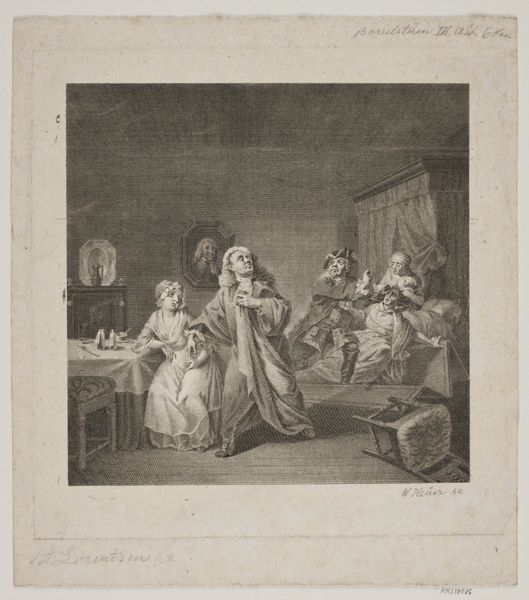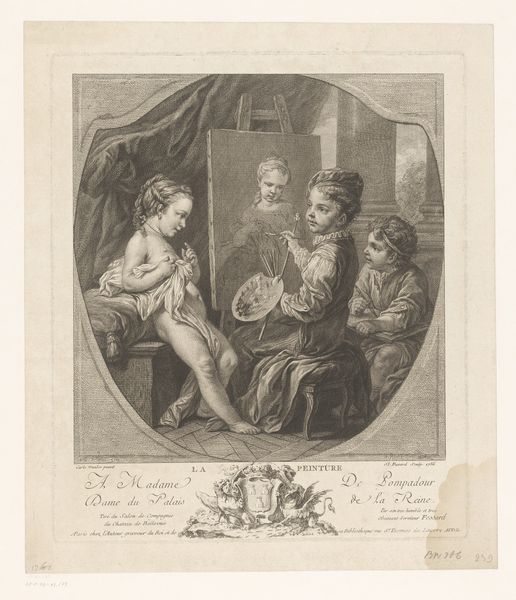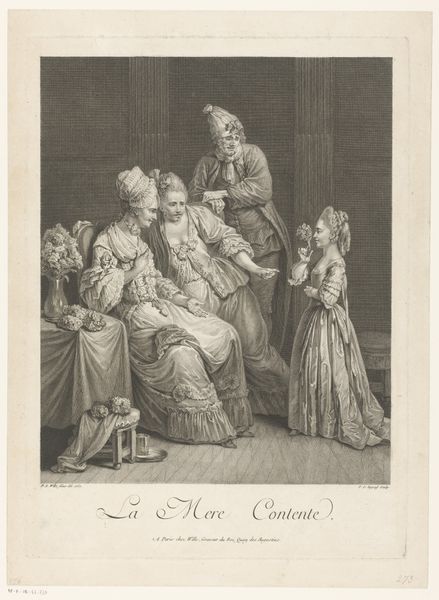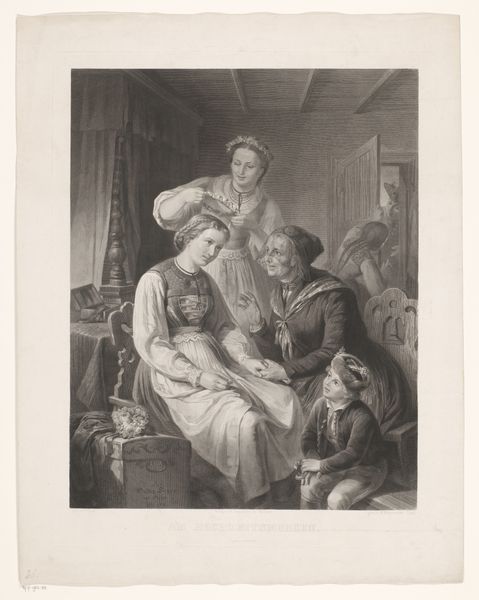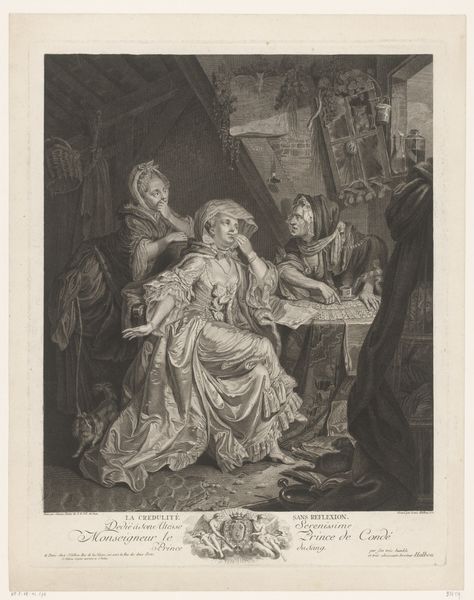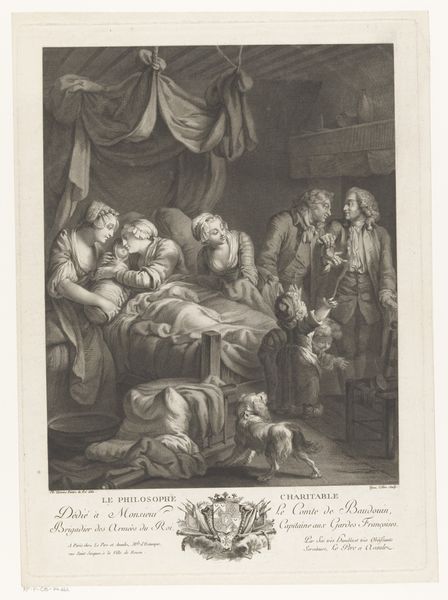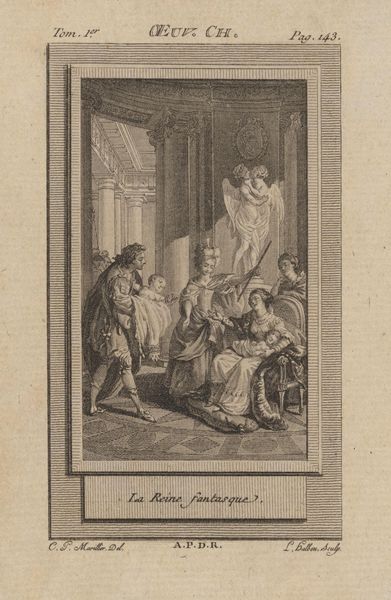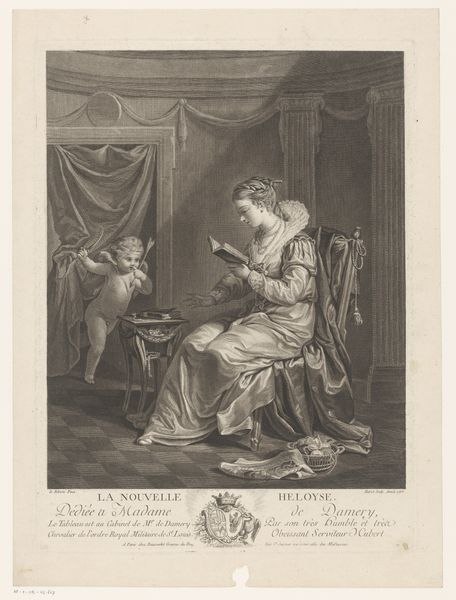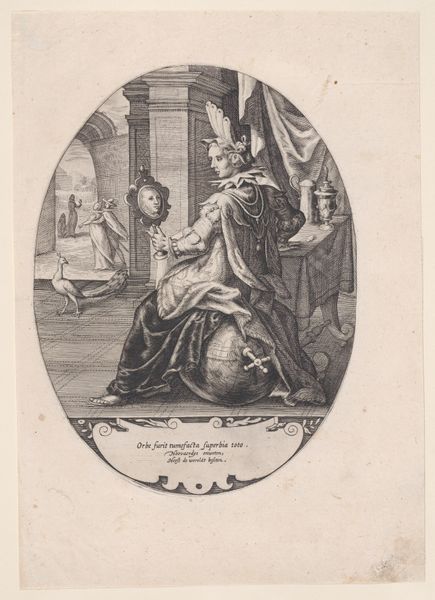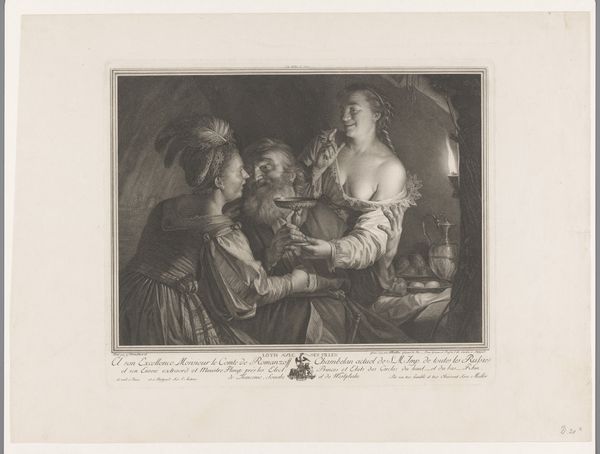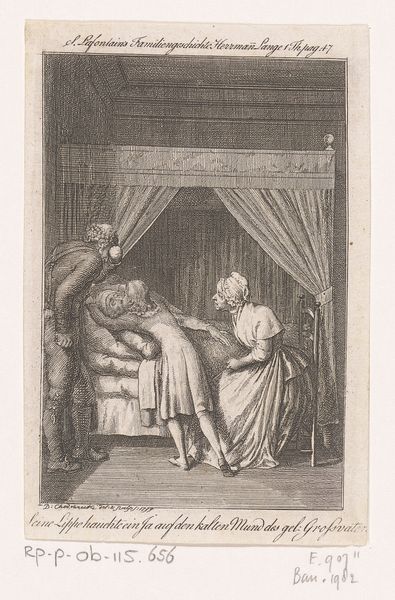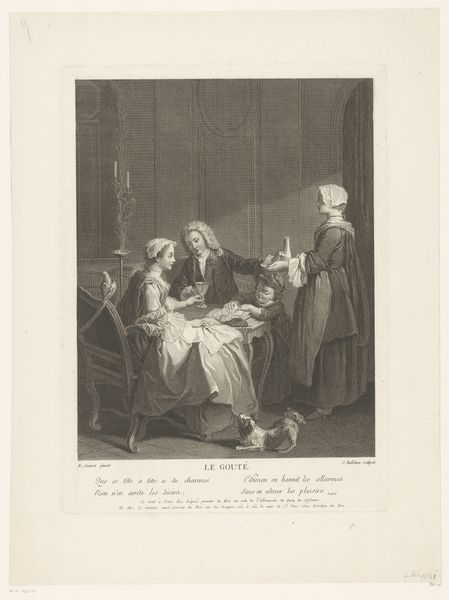
Dimensions: height 398 mm, width 285 mm
Copyright: Rijks Museum: Open Domain
Editor: Here we have "Spelende kinderen," or "Children Playing," an engraving made in 1765 by Johann Caspar Schwab. It depicts a playful scene. I find the composition a little odd; the figures seem oddly framed, like a snapshot taken through a window. What catches your eye about this piece? Curator: Indeed, the framing device is worth noting. But consider the lines: the sharp, clean strokes that define each form. Look how Schwab employs varied densities of hatching to sculpt the figures from the flat plane, creating an illusion of depth and volume, especially in the draping fabric of the girl’s dress. It is about the skillful rendering of forms and textures. What is your initial assessment of the engraving technique? Editor: Well, the lines are certainly precise, and I can see the detail in the folds of their clothing. So the artistry really resides in the manipulation of the medium itself, more than the subject matter. Curator: Precisely. Disregard, for a moment, the anecdotal subject. Instead, focus on the organization of the visual elements: the distribution of light and shadow, the contrast between the tightly rendered faces and the more loosely defined background. Do you notice how that contrast drives the eye to certain areas of the picture plane? Editor: Now that you mention it, my eyes are drawn to the interaction of the figures. I suppose it's less about the "children playing" and more about how that sense of action and depth is achieved through the composition and technique. Thanks for shifting my perspective on this piece. Curator: And thank you for your observations. Analyzing art from this perspective allows us to really look past narrative, straight to formal structures.
Comments
No comments
Be the first to comment and join the conversation on the ultimate creative platform.

